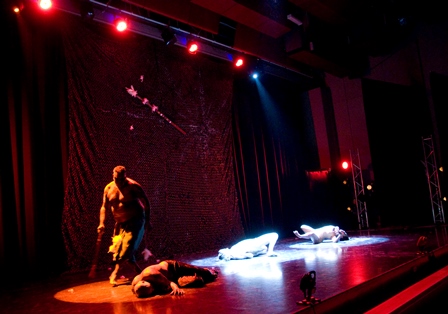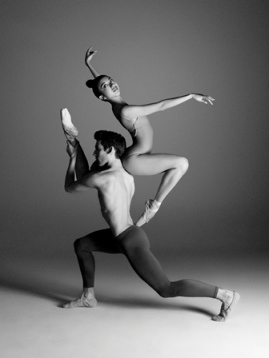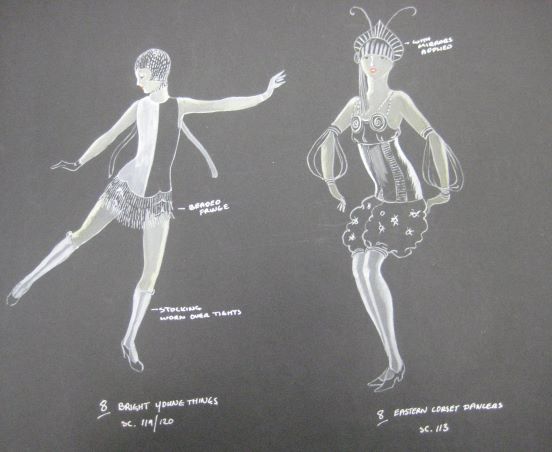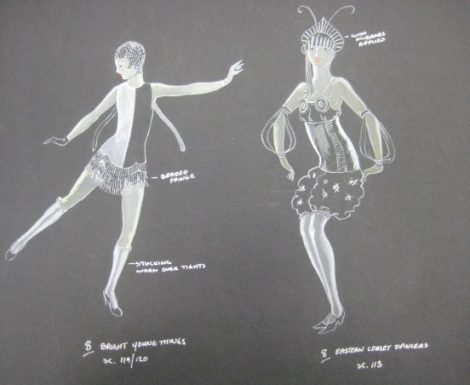1 March 2013, James O Fairfax Theatre, National Gallery of Australia, Canberra
Morning Star is the result of two years of research and choreographic development between Elizabeth Dalman and her Mirramu Dance Company based in Bungendore, New South Wales, and communities in Arnhem Land. The work is based on a sacred songline of the Yolngu people that deals with birth, life, death and rebirth. The cast of Morning Star consisted of indigenous and non-indigenous artists and the production was assisted by several cultural consultants, including the custodian of the traditional Morning Star story, Banula Marika, and didgeridoo player, Nalkuma Burarrwanga.
What made the show especially memorable, and indeed to my mind quite remarkable, was the way in which dances associated with the traditional songline were juxtaposed with contemporary versions of the same aspect of the story. So we saw, amongst other similar components of the production, a traditional spirit dance celebrating the rising of the morning star followed immediately by a contemporary spirit dance enhanced by powerful Western-style theatrical lighting and choreographed using contemporary dance vocabulary.
A particular highlight for me was a contemporary brolga dance, which in the spirit of the show followed ‘Mulung, Mulung’, a traditional brolga dance. Performed by Jade Dewi Tyas Tunggal, a particularly powerful and captivating dancer, the undulating movement of the contemporary choreography expertly captured the notion of a dancing bird. The costume, designed and made by Peta Strachan, was exceptional: a long white, feathery gown with an extended ‘tail’, it was enhanced by a red flower placed on the breast area, which recalled the red plumage the brolga displays around its head.
But I also especially liked watching Albert David who danced strongly throughout and who had a duet with Miranda Wheen towards the end of the show that displayed both his and her technical strengths and strong stage presence. It was a delight too to see Janet and Djakapurra Munyarryun back onstage, in fact often commanding the stage.
I always feel slightly alarmed, however, at the prospect of non-indigenous dancers performing traditional indigenous movement and most of the traditionally-focused sections included non-indigenous dancers working alongside indigenous artists. But to their credit the non-indigenous dancers in Morning Star only occasionally looked out of place. I did find the section called ‘Kinship’ a little jarring though. In it each dancer came forward to explain his or her indigenous heritage or links, including those dancers without an indigenous background who had been adopted into a clan by an indigenous ‘brother’ or ‘mother’ and so on. I’m not sure it was necessary and program notes convey such matters much better I think. The commitment to the project shone through in movement and breaking that feeling with wordy explanations achieved little.
Morning Star was performed in the difficult space of the James O Fairfax Theatre. Its stage has little depth and little wing space and often requires dancers who perform there to radically transform their floor patterns to accommodate the space. But this show fitted beautifully and there were moments when the ambience, helped by a score from Airi Ingram that included the occasional crying child, transported the audience to an imaginary outdoor gathering place.
Morning Star is a beautifully honest show made with love and commitment.
Michelle Potter, 4 March 2013
Featured image: (l–r) Djakapurra Munyarryun, Albert David, Miranda Wheen and Jade Dewi Tyas Tunggal in ‘Contemporary Spirit Dance’ from Morning Star. Photo: © 2013 Barbie Robinson





